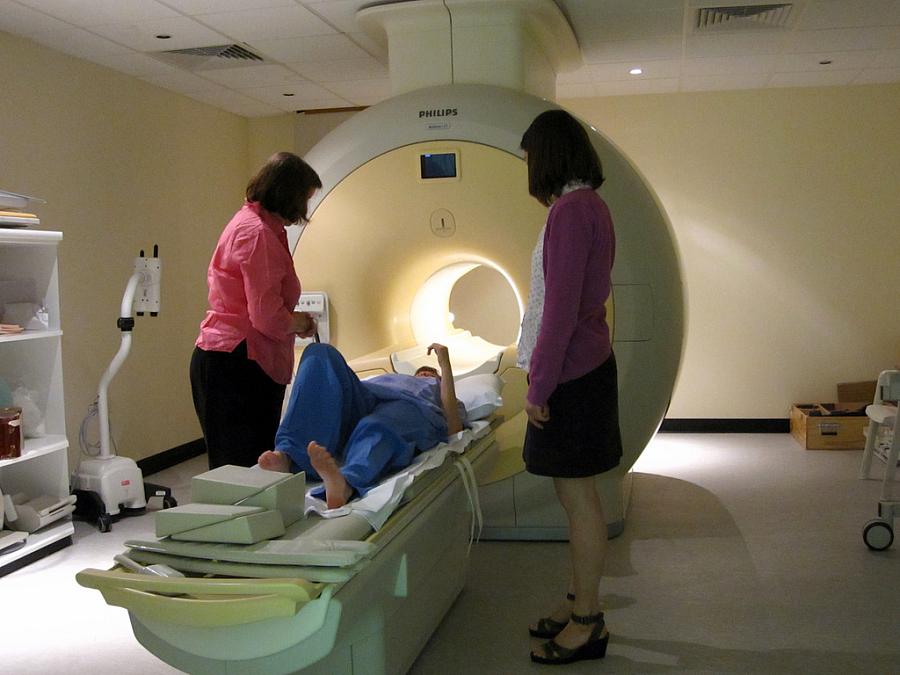Self-Interest: More docs recommending care that benefits doctors and their families

If doctors have a stake in a MRI service, they recommend it about twice as frequently as providers who do not self-refer.
You go see Dr. Ron Dalyappel about some pain in your wrist. He recommends that you go to a sports medicine clinic run by a Dr. Maureen Tennyshews. But Dr. Dalyappel didn’t tell you that Dr. Tennyshews was his sister.
Should you care?
The U.S. Government Accountability Office thinks you should. Since 2012, the agency has focused four reports so far on the high costs of what is known as physician self-referral, which is when physicians send their patients to places where they or a family member have a financial stake. The authors of the reports say that such physicians are following their financial interests and not necessarily the best interests of their patients, and they say that the trends are driving up health care costs and potentially putting patients at risk from unnecessary services.
The reports are not as easy to find as you might imagine, so here are the links:
Self-Referring Providers Generally Referred More Beneficiaries but Fewer Services per Beneficiary, April 2014
Higher Use of Costly Prostate Cancer Treatment by Providers Who Self-Refer Warrants Scrutiny, August 2013
Action Needed to Address Higher Use of Anatomic Pathology Services by Providers Who Self-Refer, July 2013
Higher Use of Advanced Imaging Services by Providers Who Self-Refer Costing Medicare Millions, October 2012
You can read the more than 200 pages of detailed work, and you should. A good start, though, is to read the recent commentary in JAMA by two health care experts who know a lot about health care costs and quality: Dr. Eli Adashi of the Warrant Alpert Medical School at Brown University and Dr. Bob Kocher of the Venrock venture capital firm and the Schaeffer Center for Health Policy and Economics at the University of Southern California.
Adashi and Kocher write:
The subject of contentious debates for over a quarter of a century, physician self-referral remains controversial. To its proponents, physician self-referral is a patient-centered care-improving proposition intent on facilitating authorization and scheduling, timely diagnosis and treatment, same-day one-stop convenience, and continuity of care in familiar settings. To its detractors, physician self-referral constitutes a cynical representation of capitalism at its worst, the divided loyalties of which are liable to compromise the ethical character of the medical profession and its all-important public trust.
The reason there is still debate and not clear-cut laws banning or expressly allowing self-referral is because of loopholes in federal laws and the absence of state laws in many cases. (I’ll write more about that in a later post.)
The GAO reports examined Medicare data from 2004 to 2010. Here are three key findings from the reports.
1. Self-referrals are costing taxpayers a bundle and posing serious risks to patients. If you just take 2010 and just look at one health care service – advanced imaging – you’ll discover that health care providers who self-referred “likely made 400,000 more referrals for advanced imaging services than they would have if they were not self-referring,” according to the GAO. What was the cost of those additional referrals to Medicare: $109 million. And, the GAO adds: “To the extent that these additional referrals were unnecessary, they pose unacceptable risks for beneficiaries, particularly in the case of CT services, which involve the use of ionizing radiation that has been linked to an increased risk of developing cancer.”
2. The pace of doctors referring patients to places where they have a financial stake is increasing more quickly than the old-fashioned kind of referral to an independent health care provider. The GAO found that “the number of self-referred MRI services increased over this period by more than 80 percent, compared with an increase of 12 percent for non-self-referred MRI services.” And doctors who self-refer tend to recommend extra care more frequently. If doctors have a stake in a MRI service, they recommend it about twice as frequently as providers who do not self-refer. The GAO reported that its analysis suggests “that financial incentives for self-referring providers were likely a major factor driving the increase in referrals.”
3. Once a doctor starts to self-refer patients, they ramp up quickly. The GAO looked at physicians who had prostate cancer patients and how many of those patients they referred to Intensity-Modulated Radiation Therapy (IMRT) services. When physicians did not have a financial stake in IMRT, they referred a smaller percentage of their patients to the therapy, about 37 percent. When they switched, that fraction grew to 54 percent.
I’ll write more about the implications of this trend and attempts to curb it in future posts.
Photo by Leon Brocard via Flickr.
